Can anyone explain to me what i did wrong with this circuit, I guess it is down to my lack on understanding of how transistors and MOSFETs work.
Up the right hand side is headers GND, S1, S2, S3, through to S14 that connect to a lithium iron battery stack.
Up the left hand side is SHIFT-xx that connect to 5v microcontroller logic.
The principle being the microcontroller can activate any bleed resistor if any cell has reached its capacity.
If I apply 5v to the microcontroller trigger pins only the bottom 2 LEDs light up, If I apply 7v only the bottom 3 LEDs light up, and so on, the higher the voltage the more LEDs light up.
Since the microcontroller only outputs 5v this is a complete failure.
I think I am going to try changing resistor R126 for a lower value, but as the board is printed with SMD 0402 resistors this may be a challenge in itself and i would like to know if I am barking up the wrong tree before i try.
Should I have gone about this a completely different way?
